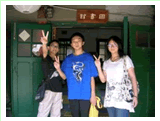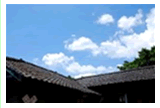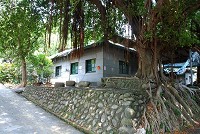Q2. What are the symptoms of leprocy?
Q3. What is the incubation period of leprosy?
Q4. How is leprosy spread? Can leprosy be inhereted or infected by foods?
Q5. Who are potential victims of leprosy?
Q6. How can leprosy be prevented?
Q7. Can leprosy be cured? What is the treatment for leprosy? Should leprosy paitients be segregated?
1. What is Hansen's disease?
Hansen's disease, commonly referred to as leprosy, is a chronic infectious disease caused by the Mycobacterium leprae bacteria. It was first discovered and named after a Norwegian physician Dr. G.A. Hansen in 1873.2. What are the symptoms of leprocy?
Leprosy mainly affects the skin and nerves. If left untreated, there can be progressive and permanent damage to the skin, nerves, limbs and eyes. This disease can cause severe deformity of the feet, hands and face. The bacteria that cause leprosy thrive in cool areas of the body such as the skin, nerves near the skin surface and in oral and nasal mucus membranes. The infection can often lead to a loss of eye sight and sensation in the affected areas, such as flat nose, fat ears, and ulcers in limbs and so on. 《Top》3. What is the incubation period of leprosy?
When a person becomes infected with Mycobacterium leprae, the bacteria begin to multiply within the body. M. leprae multiplies very slowly and the incubation period of the disease usually goes from a few months to five or ten years. Symptoms can take as long as 20 years to appear.《Top》
4. How is leprosy spread? Can leprosy be inhereted or infected by foods?
1. It is not clear how the leprosy germ is spread, but household and prolonged close contact is considered to have higher possibility of infection. The germs probably enter the body through the nose and possibly through broken skin, wounds, ulcers, and scratch wounds. The germs get in the air through nasal discharge of untreated lepromatous patients. Untreated patients may affect others ,but they will lose infection by using drugs for few days.
2. Leprosy isn't hereditary and can't be infected by foods.《Top》
5. Who are potential victims of leprosy?
Anyone can get leprosy, but children seem to be more susceptible than adults. 90% adults in Taiwan got BCG vaccinated. According to the reasearch, BCG(or Bacille Calmette-Guerin, BCG) vaccine can prevent form being infected.It has protective effect against leprosy ,although it is not used specifically for this purpose. 《Top》
6. How can leprosy be prevented?
The best way to prevent the spread of leprosy is the early diagnosis and treatment of people who are infected. For household contacts, immediate and annual examinations are recommended for at least five years after last contact with a person who is infectious. 《Top》
7. Can leprosy be cured? What is the treatment for leprosy? Should leprosy paitients be segregated?
Yes, it can. Patients with leprosy should be treated by a doctor who has experience with the disease. Treatment is with multiple drugs for six months to two years. Even after a few days of muti-drug treatment is not necessary , Therefore, it is not advisable or even possible to segregate patients of leprosy. Forible segregation usually leads to concealment which makes early, effective treatment impossible and aggravates the problem.
《Top》









